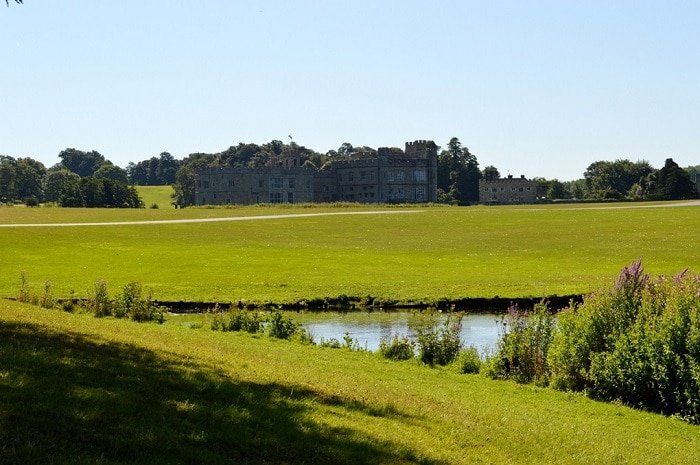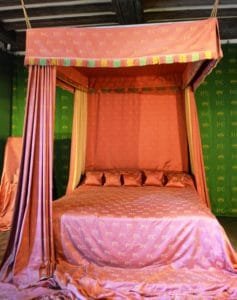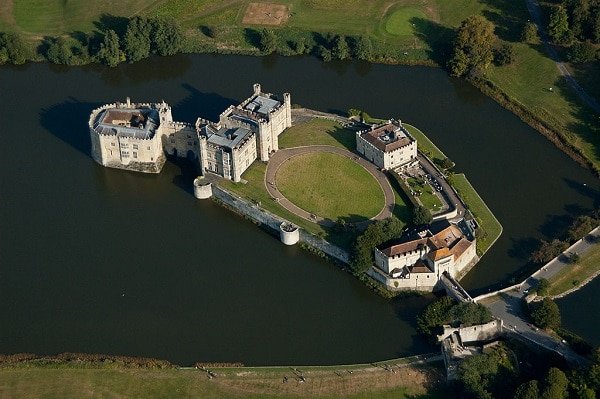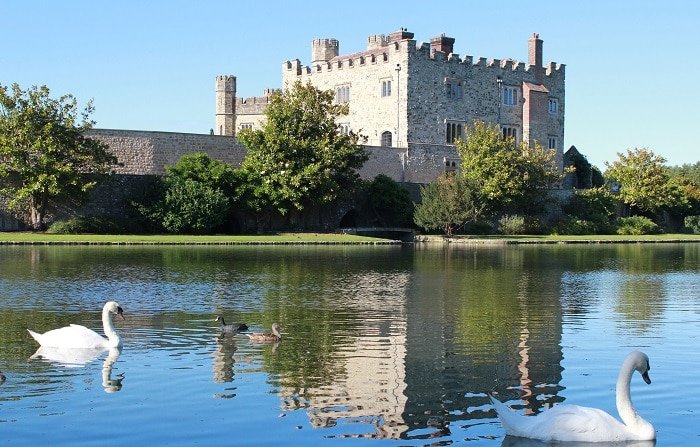
Located almost at the exact centre of Kent, Leeds Castle lies within 500 acres of parks and gardens. Its rich history and magnificent views make it an excellent destination for a day in the country.
History of Leeds Castle
The castle stands upon the site of Esledes Manor, thought to have been founded during the reign of Alfred the Great in 879 or thereabouts. Esledes is recorded in the Domesday Book as belonging to Odo, William the Conqueror’s brother. However, just two years later, the entire property was confiscated by King William II. The King gave possession to the de Crevecoeur family and in 1119, Robert de Crevecoeur built a stone castle here.

Leeds Castle remained in the hands of the de Crevecoeur family for more than a century. But royalty and political allegiances in medieval England were fickle creatures. In 1265, King Henry III took possession and transferred it to Roger de Leyburn. Thirteen years later, Leyburn sold the castle to Queen Eleanor of Castile, but the deeds would change hands several more times in the following century. It passed from queen to nobleman to another queen to another nobleman… and so on. The last queen to personally own it was Queen Catherine de Valois who gained possession in 1422.
A Tudor Romance

The tumultuous love life of Henry VIII has many connections to Kent. Hever Castle is remembered as the spot where he wooed Anne Boleyn. But decades earlier, he made Leeds Castle a palace for his first wife, Catherine of Aragon. Under his guidance, extensive renovations and expansions were made until it was befitting a Tudor queen.
Henry’s marriage to Catherine ended in 1533 after more than twenty years of marriage. The monarch lost interest in the castle and in 1553 he gifted it to Anthony St. Leger, Lord Deputy of Ireland.
Later Years
St. Leger’s descendants sold in the castle in 1618 to raise funds for a voyage with Walter Ralegh. Owned by the Culpepers, then the Fairfaxes, and the Wykeham Martins, Leeds Castle underwent various alterations. At one point a Jacobean mansion was built, only to be demolished some 200 years later.

By the 1920s, the castle was falling into disrepair. Taxes and upkeep were proving too much and so it changed hands again. Finally in 1974, Lady Baillie, who had bought and restored it in 1926, passed away. In her will, she established a foundation to maintain the property. The Leeds Castle Foundation still manages site operations. Under their leadership, it has become one of the nation’s most popular tourist destinations. More than 600,000 visitors tour the castle and its grounds each year.
Visiting Leeds Castle

Leeds Castle is open year round, with hours varying with the season. Admission tickets remain valid for one year, so you can visit again and again having paid just once.
The site is about 7 miles east of Maidstone, a short drive from the M20. Alternatively, take the train to Bearsted Station. A shuttle carries visitors between the station and the castle from April through September.
Once you’ve entered the gates, there is plenty to do, from exploring the castle itself to roaming the grounds. The playgrounds and maze keep children entertained, as do the ferry rides and falconry exhibits. Several restaurants are on site for those who haven’t brought a picnic. And if you just can’t bring yourself to leave, choose one of the accommodation options: cottages, bed and breakfast, or glamping in a knight’s tent complete with four-poster bed.
For more information, visit the Leeds Castle website.



2 thoughts on “Castles of Britain: Leeds Castle”
Comments are closed.